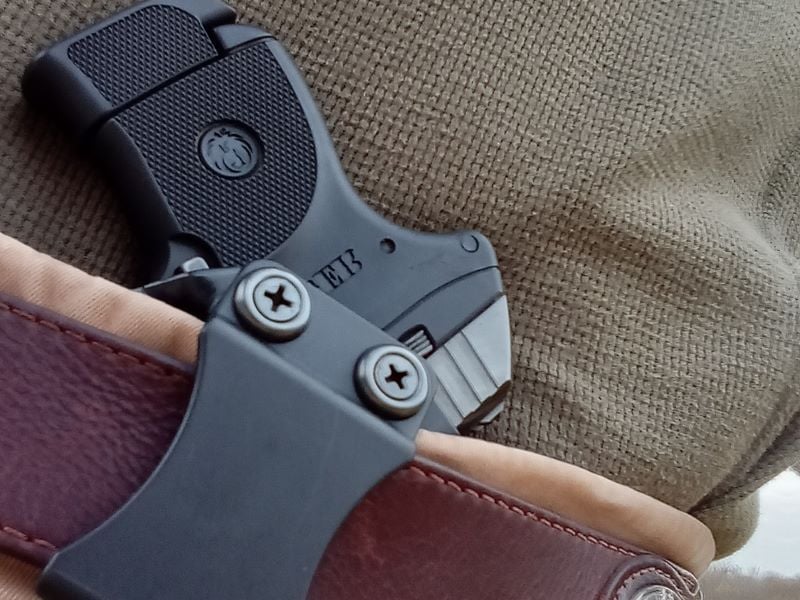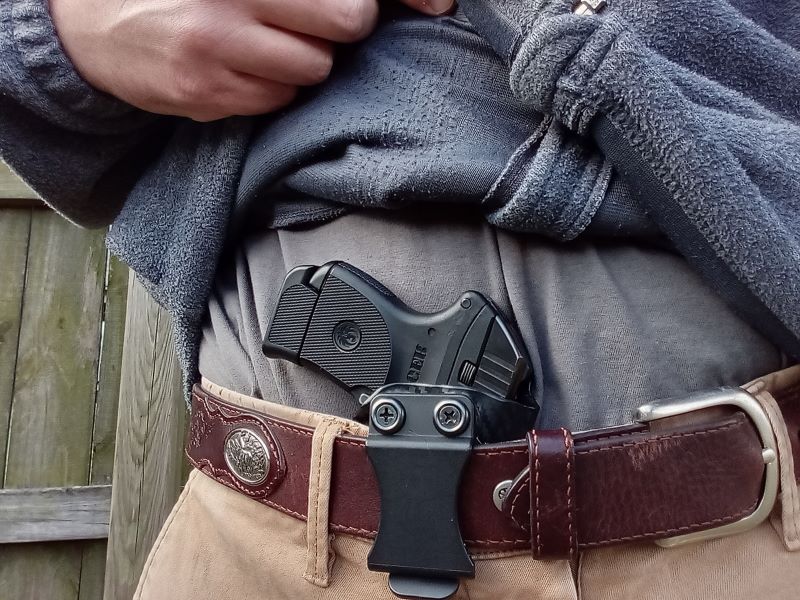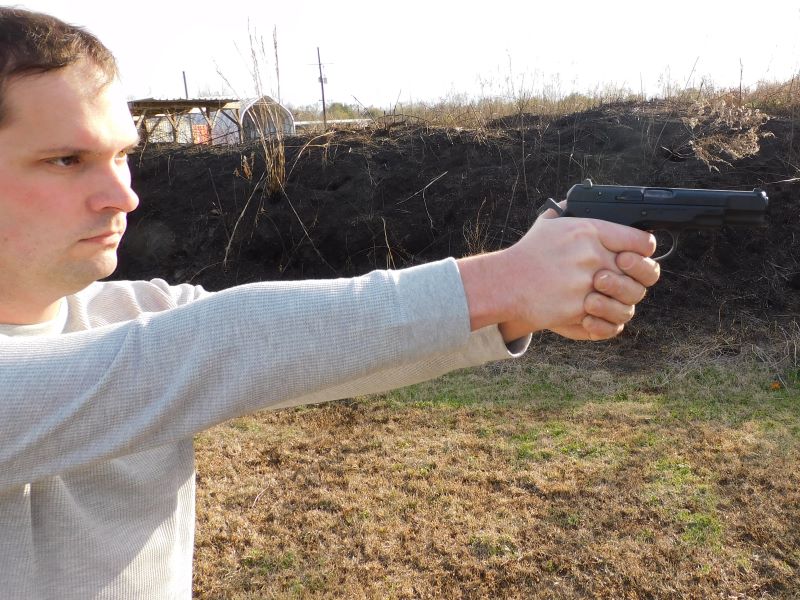When it comes to concealed carry, we tend to focus a lot on guns and gear. But where that gear will be deployed from is equally important. There are many modes of carry on different body parts and plenty of holster/gun combinations to make it easy. However, at least one concealed carry position should never be done if possible: SOB or small-of-back carry.

Small of Back Carry Defined
Small-of-back carry is much clearer to define than appendix carry. Some of us are left-handed, and some of us lost our appendixes. We all have one back, and the small part of the back rests along the waistline. Small-of-back carry entails that you carry a handgun in that position. Where appendix carry puts the handgun in reach at the front, handguns carried in a small-of-back position are retrieved from behind.
Advantages
Humans are social animals; when we see and interact with one another, it is generally face-to-face. If you are carrying a handgun in a small-of-back position, the handgun is directly behind you and impossible to see by those facing you.
Small-of-back carry can be particularly compelling among those who spend a lot of time standing or sitting in an interactive environment, like an office space. It is also more tempting than appendix carry if your day-to-day activities involve a lot of stooping. The handgun will not dig into your stomach or thighs as it is tucked behind you against the part of the body that is designed to take the least amount of movement.
The small of the back also has a shallow depression between the midback and buttocks, allowing you to hide a handgun more easily by taking advantage of the spine’s natural curvature.

Disadvantages
There are two primary disadvantages to small-of-back carry. The first is a slower draw from concealment. Small-of-back carry can be faster than drawing from a pocket, but compared to other positions along the waistline, reaching for the small of the back, drawing the pistol, and projecting it in front of you will be slow. With appendix carry, a simple reach to your front is needed to draw and point in the same direction. The difference is split when carried on the hip at nine or three o’clock.

On the clock, I can generally draw from concealment at nine o’clock in 1.8 seconds. With the same handgun and holster arrangement tucked behind me at six o’clock, my time from draw to sights is 2.7 seconds. I generally shy away from appendix carry, but on the clock, I could get the pistol on target in 1.3 seconds, and just about anyone can do it faster than me. But SOB carry is measurably slower. How will that affect you in your everyday life? That depends on how quickly the threat is coming and if you see it coming. What is easier to see coming is the potential for injury from carrying in the SOB position.
Dangerous to the Spine
SOB carry generally positions the firearm along the vertebra of the lower back. Regardless of your age and occupation, these vertebrae are easily injured. Some instructors caution against SOB carry because, in the event of a scuffle or a random slip and fall, a pound or two of steel will crash into your spine. Such an injury can lead to paralysis, debilitating pain, or any number of losses to your physical faculties.
If you insist on small-of-back carry, a safer method is to position the firearm off the spine and favor one of your hips. This doesn’t change the fact that your holster might shift throughout your day. In my own experience trying small-of-back carry outside the small of my back, the unaffected hip ached while compensating for the pressure along the hip that was carrying. This is especially painful when sitting for long periods, and when done long enough, I developed sciatic nerve pain. Once you develop lower back problems, they can be relieved but never eliminated.
SOB Carry: Unsafe at Any Speed?
Small-of-back carry avoids a lot of scrutiny because it is not particularly trendy among the trainers and influencers we seek out for information. But it is a carry option with plenty of holsters on the market. On the face of it, small-of-back carry is safer if you are particularly nervous about appendix carry. You are unlikely to flag yourself with a holstered pistol directly behind you. Aside from this, there is a better case for appendix carry or any other carry position, overgoing for the small-of-back position.
In a dynamic environment, carrying on the hip saves you from the appendix carry dig just as much as SOB carry does, and when we interact with other people, we cannot always assume it will be face-to-face. There are plenty of legitimate reasons for people to come up behind you—like getting in line at the movie theater. If a miscreant is looking to victimize you, they will look to catch you unaware, and your handgun might be more accessible to them.
Even with no criminal intent, small-of-back carry can be consequential from one slip on a patch of ice just as much as going to the ground with an assailant. For all these reasons, there is no excuse for SOB carry.

